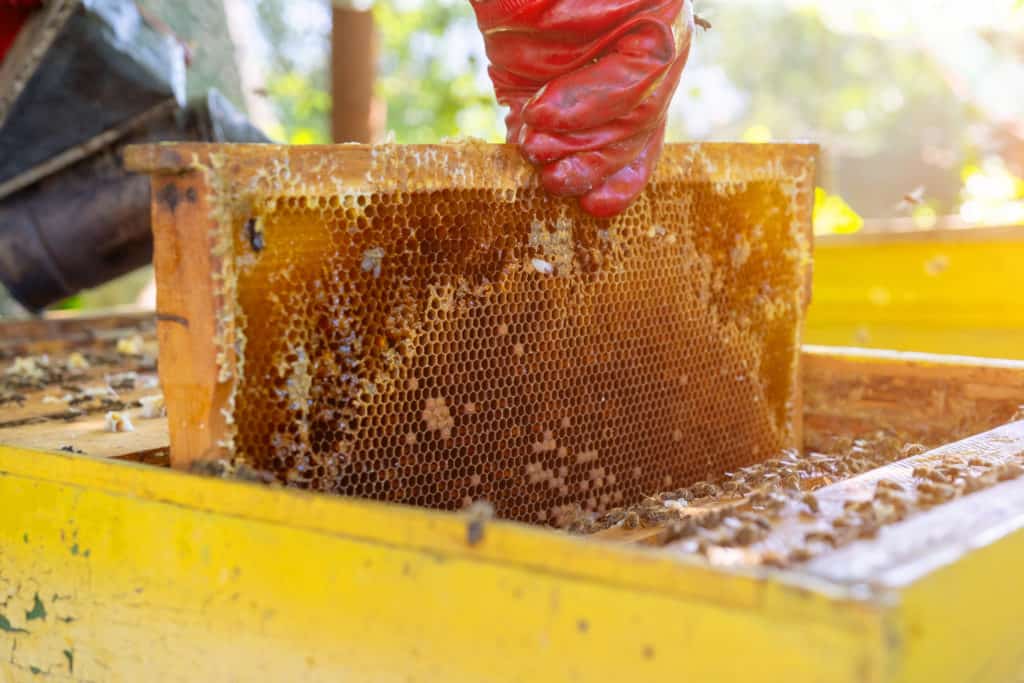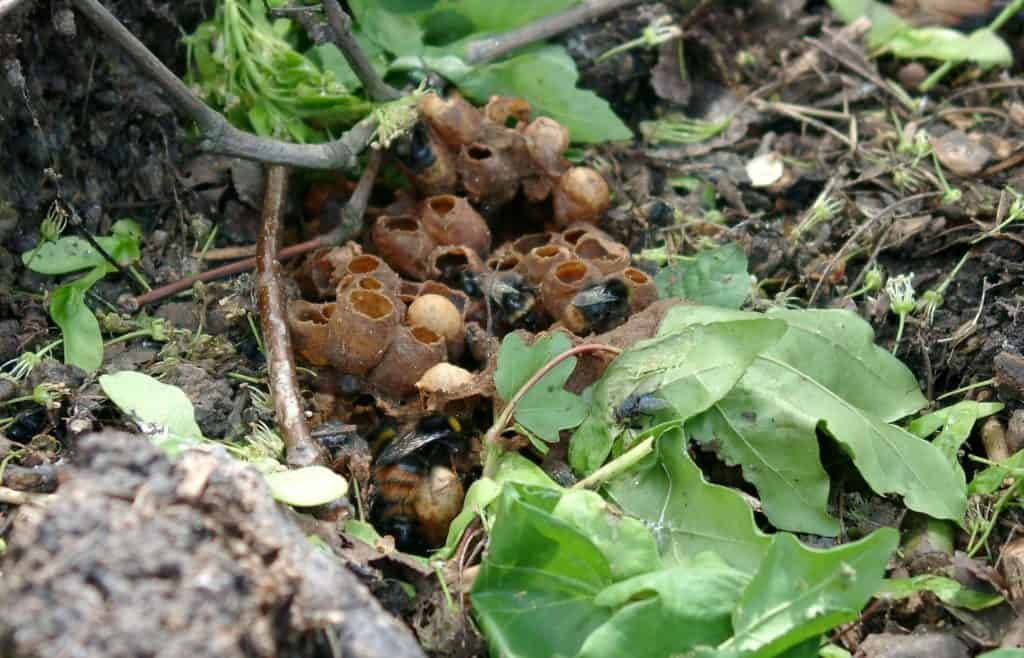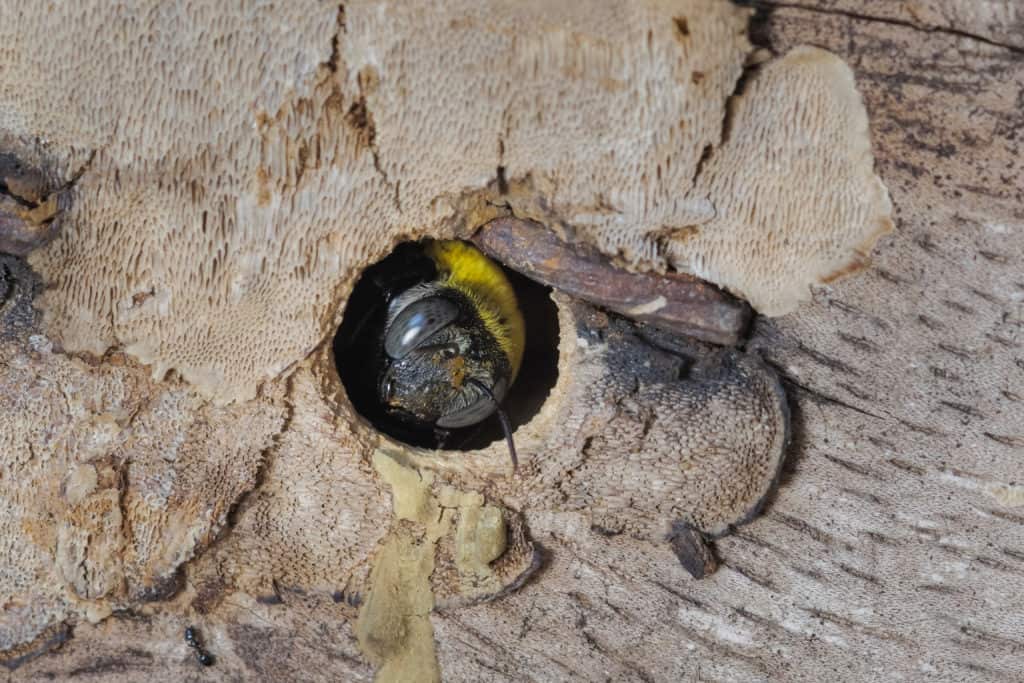Identifying Different Bee Nests
Identifying Different Bee Nests
Different Types of Bees
When people think of bees, most commonly people immediately think of honeybees. However, in reality, there are roughly 20,000 different species of bees and while many beehives may look similar, there can be vast differences depending on each particular species.
Honeybee
Honeybee hives are made up of honeycomb. Made with near mathematical perfection, the honeycomb is sculpted with striking accuracy and a measurable spatial advantage. Honeybees manage to form these waxy structures with evenly constructed hexagonal compartments. Each of the edges of the hexagons are roughly 0.1 mm thick and are arranged into an exact 120° angle. Not only is this geometry incredibly impressive, but it is extremely beneficial for the storage of honey and efficiency of hive space overall. Hexagons can fit together with one another without leaving any gaps or requiring more wax to sustain the shapes. Since the hexagons share walls with one another and are packed so tightly together, they form a strong usable structure without wasting any materials or space.

When kept by beekeepers, the honeycomb is formed on the frames of a beekeeping box, making a very organized and easily accessible hive. When not maintained by beekeepers, the cells are often built downward from tree branches (or other available structures) in vertical layers that are rounded.

Bumblebees
Known scientifically as “Bombus,” the term bumblebee is often utilized to describe over 250 different types of bees within the Apidae family. Some common types include the Bombus lapidarius, Bombus hypnorum, and the Bombus hortorum. Because the term covers so many difference species, bumblebee nests can vary, although most commonly they are found on ground level. Sometimes, bumblebees will burrow to form nests similar to yellowjackets, while others will find hollowed out logs, piles of branches/foliage, or other low structures to inhabit for shelter.
Occasionally, clusters of what looks similar to barnacles made of beeswax can be seen on the ground. This is an exposed nest. They appear far less structured than the nests of their distant cousins the honeybees and are often very lumpy and disorganized.

Carpenter Bees
Similar to termites and carpenter ants, carpenter bees are notorious wood destroying insects. They burrow into wooden structures, chewing at the lumber with their powerful mandibles in order to lay their eggs inside. They do not eat the wood, rather, they simple bore through it to create their nesting sites, leaving behind small piles of sawdust. Carpenter bees tend to repeatedly tunnel in the same areas, creating near perfect circles as entry points.

Citations
Bradford, A. (2017) Facts About Bumblebees, Live Science. Available at: https://www.livescience.com/57509-bumblebee-facts.html (Accessed: August 2020).
Gibb, T. (2018) Carpenter Bees, Purdue University. Department of Entomology. Available at: https://extension.entm.purdue.edu/publications/E-252/E-252.html (Accessed: August 2020).
Ground Nesting Bees in Your Backyard (2020) Cornell University College of Agriculture and Life Sciences. Department of Entomology. Available at: https://entomology.cals.cornell.edu/extension/wild-pollinators/native-bees-your-backyard/ (Accessed: August 2020).
Potter, M. (2018) Carpenter Bees, University of Kentucky College of Agriculture, Food and Environment. Entomology at the University of Kentucky. Available at: https://entomology.ca.uky.edu/ef611 (Accessed: August 2020).
The 3 Coolest Things Built by Bugs (2013) YouTube. SciShow. Available at: https://www.youtube.com/watch?v=I8fLnDbWkg&list=PLB3FCEEAC84884760&index=78 (Accessed: June 2020).
8 Creative Ways to Have a Pest-Free Fourth of July
8 Creative Ways to Have a Pest-Free Fourth of July 8 Creative Ways to Have a Pest-Free Fourth of July Summary: The Fourth [...]
A Simple Guide to Preventing Stinging Pests
A Simple Guide to Preventing Stinging Pests A Simple Guide to Preventing Stinging Pests Summary: Stinging insects are more active in warm weather, [...]
These 10 Natural Mosquito Repellents Can Actually Help
These 10 Natural Mosquito Repellents Can Actually Help These 10 Natural Mosquito Repellents Can Actually Help Summary: Natural mosquito repellents are easier to [...]
How to Get Rid of Carpet Beetles
How to Get Rid of Carpet Beetles How to Get Rid of Carpet Beetles Summary: Carpet beetles are sneaky pests that don’t usually [...]
How Do Roaches Affect Asthma and Allergies?
How Do Roaches Affect Asthma and Allergies? How Do Roaches Affect Asthma and Allergies? Summary: It’s no secret that pests impact human health, [...]
These 5 Carnivorous Pests Might Surprise You!
These 5 Carnivorous Pests Might Surprise You! These 5 Carnivorous Pests Might Surprise You! Summary: There are many eco-friendly ways to prevent pests, [...]

